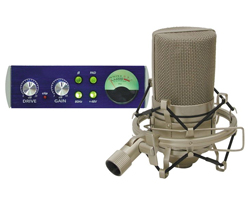
Transformers
Arguably, transformers are a throwback from the early Bell Labs days when the input and output characteristics of amplifiers required specific impedances, and because transformers are a great way to stop the flow of DC from one stage to the next.
In its simplest form, a transformer consists of two coils of wire-a primary and secondary coil, wound around a common core. Even though the primary and secondary wires may touch, their insulation keeps them from being directly connected.
Instead, the electrical energy is induced-picked up literally out of the air-because the two coils are so close. Transformers with metal cores also affect the transfer of the electrical energy.
Now, let’s sit back and let George Massenburg and John Hardy answer a few questions for us all.
Ty Ford: Some microphones have transformers at their outputs. Some are transformerless, some preamps have transformers at their inputs, some don’t.
Are there any rules that determine what happens to the sound when mixing and matching transformer and non-transformer mics and preamps, or are the individual circuits so different that simple guidelines can’t be established?
George Massenburg: Well, it won’t surprise anyone to know that I have different rules. Generally, I want to keep a signal as clean and transparent as possible for as long as possible.
I pretty much prefer mics with good output transformers or no transformers, like the Schoeps design.
I can’t really say that I like input transformers on mic preamps. Frankly, if I want a roll-off and low-frequency distortion I’ll add it to the degree that I want it, most often later in mixing.
John Hardy: Generally, either type of mic can be used with either type of mic preamp. Limiting this discussion to the interface between mic and mic preamp, it is mostly the interaction between the output impedance of the mic and the input impedance of the mic preamp that causes audible differences as the result of an “EQ” effect. If those impedances are the same at all frequencies (linear), there will be no EQ effect.
If the impedances are nonlinear-having some degree of inductance and/or capacitance in addition to the basic resistance-in or near the audio bandwidth, there can be an audible difference.
Equalizers use inductors and/or capacitors to create frequency changes. It is not the presence or absence of a transformer that matters, it is the linearity of the impedance.
It’s easier to have a linear impedance in a transformerless circuit, but a well designed transformer can have a linear impedance too.
Ty Ford: What are the advantages and disadvantages of mics with output transformers?
George Massenburg: I don’t like them for any reason. Even in live situations where one might reason that transformers would reduce interference over long distances, I avoid them where possible.
John Hardy: A transformer at the output of a mic can step the impedance of the mic up or down as required. It also blocks the +48 volt phantom supply from getting into the circuitry or capsule of the mic where damage could occur.
